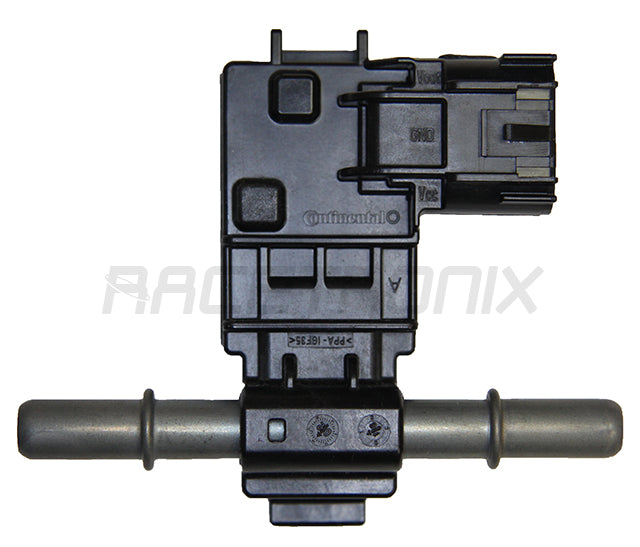No Products in the Cart
(586)294-4404
Phone Hours M-Thurs 10:00AM-4:00 PM Fri 9AM-12PM EST

FEATURES:
We source these sensors directly from the manufacturer Continental Autmotive Systems USA.
They are not off-shore knock-offs listed on some auction sites.
Please see our quick-disconnect adapters and hose fittings under add-ons on the right side of this page.
DESCRIPTION:
The flex fuel sensor measures the ethanol-gasoline ratio of the fuel being used in a flexible fuel vehicle. Flexible fuel vehicles can be operated with a blend of ethanol and gasoline, up to 85 percent ethanol. In order to adjust the ignition timing and the fuel quantity to be injected, the engine management system requires information about the percentage of ethanol in the fuel.
The flex fuel sensor uses quick-connect style fuel connections, an incoming fuel connection, and an outgoing fuel connection. All fuel passes through the flex fuel sensor before continuing on to the fuel rail. The flex fuel sensor measures the fuel alcohol content, and sends an electrical signal to the engine control module (ECM) to indicate ethanol percentage.
The flex fuel sensor has a three-wire electrical harness connector. The three wires provide a ground circuit, a power source, and a signal output to the ECM. The power source is battery positive voltage and the ground circuit connects to an engine ground. The signal circuit carries the ethanol percentage via a frequency signal.
Alcohol content information is supplied to the ECM from the fuel composition sensor. The fuel composition sensor has a battery positive circuit, a signal circuit, and a ground circuit. The fuel composition sensor uses a microprocessor inside the sensor to measure the ethanol percentage and changes the output signal accordingly. The signal circuit carries the ethanol percentage via the frequency signal. The ECM provides an internal pull up to 5?V on the signal circuit, and the fuel composition sensor pulls the 5?V to ground in pulses. The normal range of operating frequency is between 50–150?Hz. The microprocessor inside the sensor is capable of a certain amount of self-diagnosis. An output frequency between 180?Hz and 190?Hz indicates that the fuel is contaminated.
When your order has shipped, you will receive an email notification from ShipStation and Our Website which will include a tracking number you can use to check its status. Please allow 48 hours for the tracking information to become available as some methods of shipment differ from one to another.
If you haven’t received your order within 5 days of receiving your shipping confirmation email, please contact us at marianne@fullthrottlespeed.com with your name and order number, and we will look into it for you!


